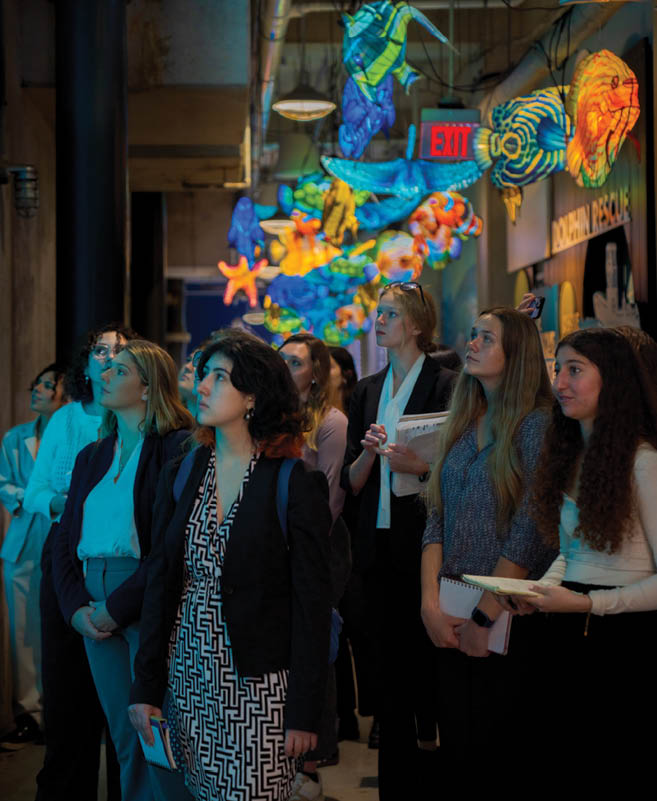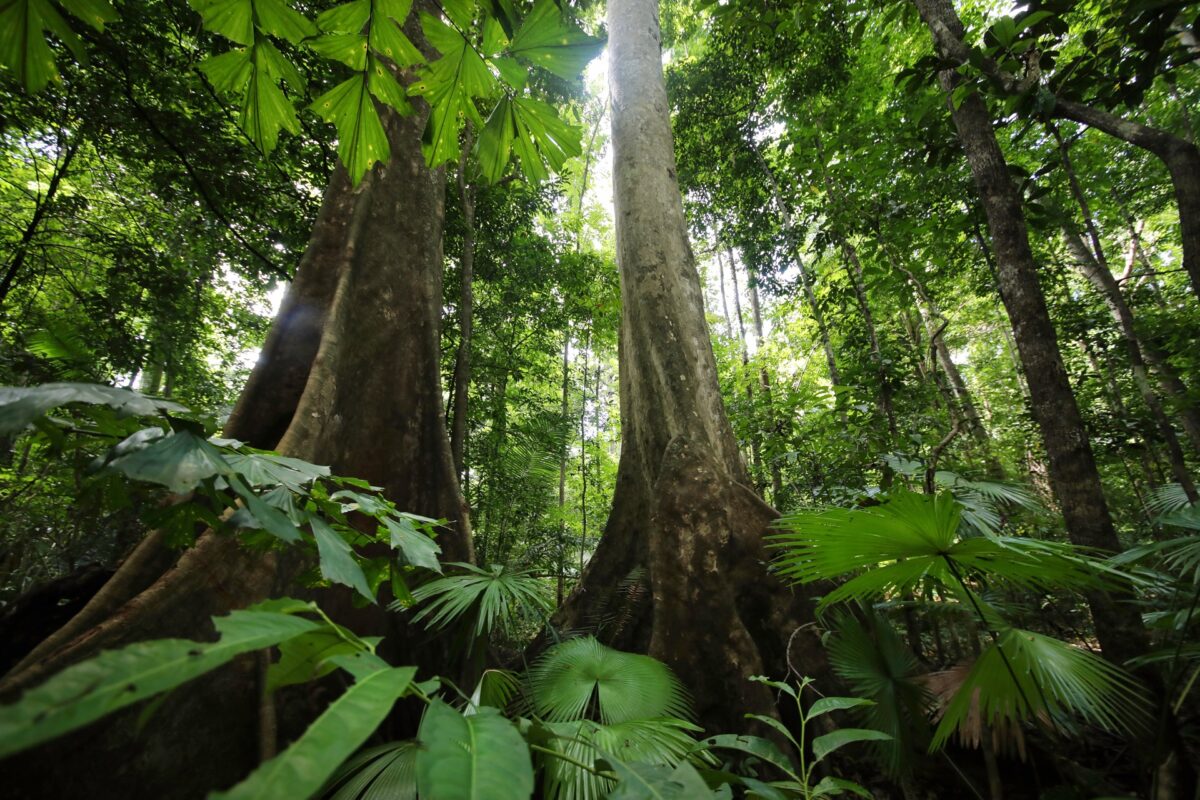Beyond Science: The Transformative Power Of Environmental Education – New England Aquarium

Report on Community-Based Marine Conservation in Costa Rica
Introduction: A Strategic Approach to Sustainable Development
This report outlines a community-based conservation initiative in the Southern Caribbean region of Costa Rica, supported by the New England Aquarium’s Marine Conservation Action Fund (MCAF). The project leverages environmental education as a transformative tool to address interconnected environmental and socio-economic challenges. The initiative’s framework is fundamentally aligned with several United Nations Sustainable Development Goals (SDGs), aiming to foster a future of harmonious coexistence between communities and their natural environment.
Alignment with Sustainable Development Goals (SDGs)
The project’s activities are designed to directly contribute to the achievement of key SDGs, creating a multi-faceted impact on the local community and its ecosystem.
- SDG 4: Quality Education: By delivering innovative environmental education, the project empowers new generations with the knowledge to become stewards of their natural heritage.
- SDG 8: Decent Work and Economic Growth: The focus on sustainable management of biodiversity supports the local ecotourism sector, a vital source of income and employment.
- SDG 11: Sustainable Cities and Communities: The initiative strengthens community resilience and involvement by ensuring local populations are active participants in conservation efforts.
- SDG 14: Life Below Water: All activities are centered on the conservation of marine life, including sea turtles and manatees, and the health of the Caribbean marine ecosystem.
- SDG 17: Partnerships for the Goals: The project’s success relies on strategic collaborations between local organizations, governmental bodies, and international funders like MCAF.
Core Strategies and Implementation
H3: Environmental Education as a Catalyst for Change
Environmental education is identified as the primary tool for breaking cycles of poverty and environmental degradation in the historically underserved Southern Caribbean. The project implements educational programs that connect environmental health with economic stability, demonstrating that sustainable resource management is crucial for long-term prosperity. This strategy directly advances SDG 4 (Quality Education) by providing accessible and relevant learning opportunities.
- School Workshops: In partnership with Ministry of Education schools, workshops are conducted using innovative tools, such as virtual reality, to immerse children in marine environments and teach them about species like sea turtles.
- Community Events: Public events are organized to raise broad awareness and foster a collective sense of responsibility for ocean conservation.
H3: Community Engagement and Strategic Partnerships
A cornerstone of the initiative is its community-based approach, which ensures that conservation efforts are locally led and culturally relevant. This model promotes SDG 11 (Sustainable Cities and Communities) by empowering residents to take ownership of their natural resources. The project’s impact is amplified through teamwork, a clear demonstration of SDG 17 (Partnerships for the Goals) in action.
Key collaborative activities include:
- Family events celebrating Ocean Day and National Parks Day.
- The annual Manatee Festival, a significant community-wide initiative.
- Educational excursions to Gandoca Beach for hands-on learning and participation in beach cleanups, directly contributing to SDG 14 (Life Below Water).
H3: Linking Conservation to Economic Opportunity
The project emphasizes the direct link between a healthy ecosystem and a robust local economy. By protecting Costa Rica’s rich biodiversity, the initiative helps secure the future of ecotourism, which provides essential jobs and economic stimulus. This synergy between environmental protection and economic activity is a practical application of SDG 8 (Decent Work and Economic Growth), illustrating how sustainable practices can drive economic development and help alleviate poverty.
1. Which SDGs are addressed or connected to the issues highlighted in the article?
-
SDG 4: Quality Education
The article emphasizes the role of “environmental education” as a “powerful and transformative tool” to empower new generations and ensure a future of harmonious coexistence. It mentions specific educational activities like workshops in schools and using virtual reality to teach children about ocean conservation.
-
SDG 8: Decent Work and Economic Growth
The text connects environmental health to economic prosperity, stating that in Costa Rica, “ecotourism is a vital source of income.” It highlights that sustainably managing natural resources “ensures jobs, boosts the economy,” directly linking conservation efforts to economic benefits for the community.
-
SDG 14: Life Below Water
This is the central theme of the article. The author is a marine biologist focused on the “conservation of…ancient species” like sea turtles. The text describes numerous marine conservation activities, including celebrating the “Manatee Festival,” organizing “beach cleanups,” and raising awareness about “ocean conservation.”
-
SDG 17: Partnerships for the Goals
The article repeatedly stresses the importance of collaboration. It describes a “community-based approach and strategic partnerships” and mentions working with the “Marine Conservation Action Fund (MCAF) community” and “other organizations in our region.” The phrase “Teamwork amplifies our impact!” encapsulates this goal.
2. What specific targets under those SDGs can be identified based on the article’s content?
-
SDG 4: Quality Education
- Target 4.7: Ensure all learners acquire knowledge and skills needed for sustainable development. The article directly supports this by describing efforts to provide “environmental education” to children through “workshops in Ministry of Education schools” and activities designed to “empower new generations.”
-
SDG 8: Decent Work and Economic Growth
- Target 8.9: Devise and implement policies to promote sustainable tourism that creates jobs. The article points to this target by identifying “ecotourism” as a “vital source of income” and stating that sustainable management of resources “ensures jobs.”
-
SDG 14: Life Below Water
- Target 14.1: Prevent and significantly reduce marine pollution. This is addressed through the mention of community participation in “beach cleanups.”
- Target 14.2: Sustainably manage and protect marine and coastal ecosystems. The entire project, focused on conservation at “Gandoca Beach” and celebrating “National Parks Day,” aligns with protecting these ecosystems.
- Target 14.a: Increase scientific knowledge and research capacity. This is implied through the author’s work as a “marine biologist,” the support from MCAF for “leaders…spearheading…initiatives,” and the use of “innovative tools like virtual reality to explore the ocean.”
-
SDG 17: Partnerships for the Goals
- Target 17.17: Encourage and promote effective public, public-private and civil society partnerships. The article is a clear example of this, detailing “collaboration with other organizations,” a partnership with the “New England Aquarium’s Marine Conservation Action Fund (MCAF),” and working with “Ministry of Education schools.”
3. Are there any indicators mentioned or implied in the article that can be used to measure progress towards the identified targets?
-
For Target 4.7 (Education for sustainable development):
- An implied indicator is the number of children reached through environmental education programs. The article mentions bringing this education to “more children” through “workshops in Ministry of Education schools” and community events.
-
For Target 8.9 (Sustainable tourism jobs):
- A key implied indicator is the number of local jobs supported by ecotourism. The article states that sustainably managing resources “ensures jobs” and boosts the local economy.
-
For Target 14.1 (Marine pollution):
- A direct indicator is the organization of and participation in beach cleanups. The article explicitly mentions that community members “participate in beach cleanups” as part of their activities.
-
For Target 14.a (Scientific knowledge):
- An implied indicator is the adoption of innovative educational tools for marine conservation. The article cites the use of “innovative tools like virtual reality to explore the ocean” as a method for education.
-
For Target 17.17 (Partnerships):
- A direct indicator is the number and type of active partnerships. The article explicitly names partners like the “New England Aquarium’s Marine Conservation Action Fund (MCAF),” “other organizations in our region,” and “Ministry of Education schools.”
4. Create a table with three columns titled ‘SDGs, Targets and Indicators” to present the findings from analyzing the article. In this table, list the Sustainable Development Goals (SDGs), their corresponding targets, and the specific indicators identified in the article.
| SDGs | Targets | Indicators (Mentioned or Implied in the Article) |
|---|---|---|
| SDG 4: Quality Education | 4.7: Ensure all learners acquire knowledge and skills needed for sustainable development. | Number of children participating in environmental education workshops and virtual reality sessions. |
| SDG 8: Decent Work and Economic Growth | 8.9: Promote sustainable tourism that creates jobs. | Number of local jobs created or sustained through ecotourism activities. |
| SDG 14: Life Below Water | 14.1: Prevent and reduce marine pollution. | Frequency of and community participation in beach cleanups. |
| 14.2: Sustainably manage and protect marine and coastal ecosystems. | Community-led conservation events (e.g., Manatee Festival, National Parks Day celebrations). | |
| 14.a: Increase scientific knowledge and research capacity. | Use of innovative tools (e.g., virtual reality) for marine science education. | |
| SDG 17: Partnerships for the Goals | 17.17: Encourage and promote effective public, public-private and civil society partnerships. | Number of active partnerships with local and international organizations (e.g., MCAF, schools, community groups). |
Source: neaq.org

What is Your Reaction?
 Like
0
Like
0
 Dislike
0
Dislike
0
 Love
0
Love
0
 Funny
0
Funny
0
 Angry
0
Angry
0
 Sad
0
Sad
0
 Wow
0
Wow
0








































































